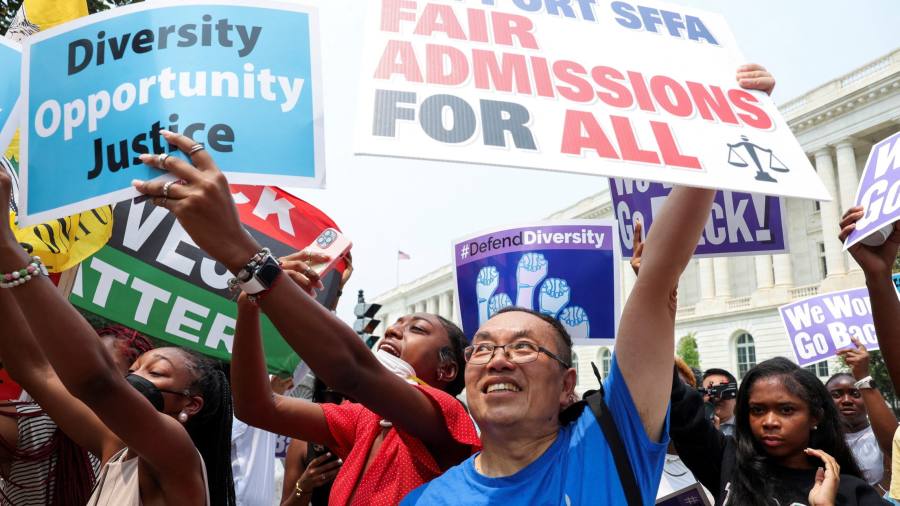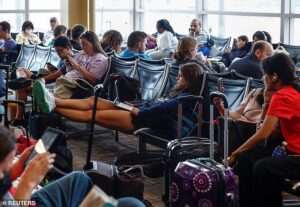
Receive free Racial equality updates
We’ll send you a myFT Daily Digest email rounding up the latest Racial equality news every morning.
Since the early 1960s, US institutions have sought to counter the lasting legacy of racial prejudice with “affirmative action” programmes to promote diversity in education and the workplace. That job is far from done.
But the US Supreme Court has thrown a spanner in the works. Its ruling last week declared that admissions programmes at Harvard and the University of North Carolina that aid under-represented minorities violate the constitution’s guarantee of equal protection. “College admissions are zero-sum. A benefit provided to some applicants but not to others necessarily advantages the former group at the expense of the latter,” Chief Justice John Roberts wrote.
The ruling is the latest assault on long-held liberal precedents by the six conservative justices who have also kneecapped federal environmental regulators and tossed out constitutional protections for abortion.
Affirmative action is, though, not only a progressive cause: research demonstrates that diverse teams make better decisions that lead to better outcomes. Large employers underscored the economic benefits in a brief to the Supreme Court that unsuccessfully sought to defend the current system.
Universities and employers should not let this ruling end efforts to build inclusive environments and create greater equality of opportunity. History suggests that this will not be easy. Nine states have already banned affirmative action, and minority enrolment at their flagship universities has either fallen sharply or failed to keep up with demographic changes that were already bringing in more non-white applicants.
If America’s top universities are to be the engines of progress and social mobility that the country needs, their admissions criteria also need to be redesigned. A shocking number of top US schools already admit more students from the top 1 per cent financially than the bottom 60 per cent.
Universities will have to step up their efforts to recruit from non-traditional backgrounds, and provide them with the funding and support they need to succeed. Increased financial aid and programmes aimed at helping first-generation college students navigate university life are a must.
Now that race cannot provide a generic boost, other factors, such as low income, overcoming adversity and succeeding despite a poor performing school, should gain more weight. Dropping the preferences for the children of alumni and donors would also make room for candidates from a wider range of backgrounds.
Universities must also make full use of an exception Chief Justice John Roberts made in the Harvard decision. He wrote “nothing prohibits universities from considering an applicant’s discussion of how race affected the applicant’s life.” That should allow some leeway in a case-by-case basis.
Companies are not directly affected by this decision but will have to spread the recruitment net wider if top universities become less diverse. They also need to think hard about how to structure internal programmes that seek to give diverse candidates an extra boost. Reverse discrimination claims, which had fallen sharply from 2011 to 2021, are now on the rise again.
Mentoring and leadership programmes aimed at specific races are especially vulnerable to challenge. But choices based on individual characteristics and needs — rather than tick boxes — ought to survive scrutiny.
Liberal Justice Sonia Sotomayor warned the ruling “will entrench racial segregation . . . because racial inequality will persist so long as it is ignored”. US educators and businesses have to make sure that does not happen.

